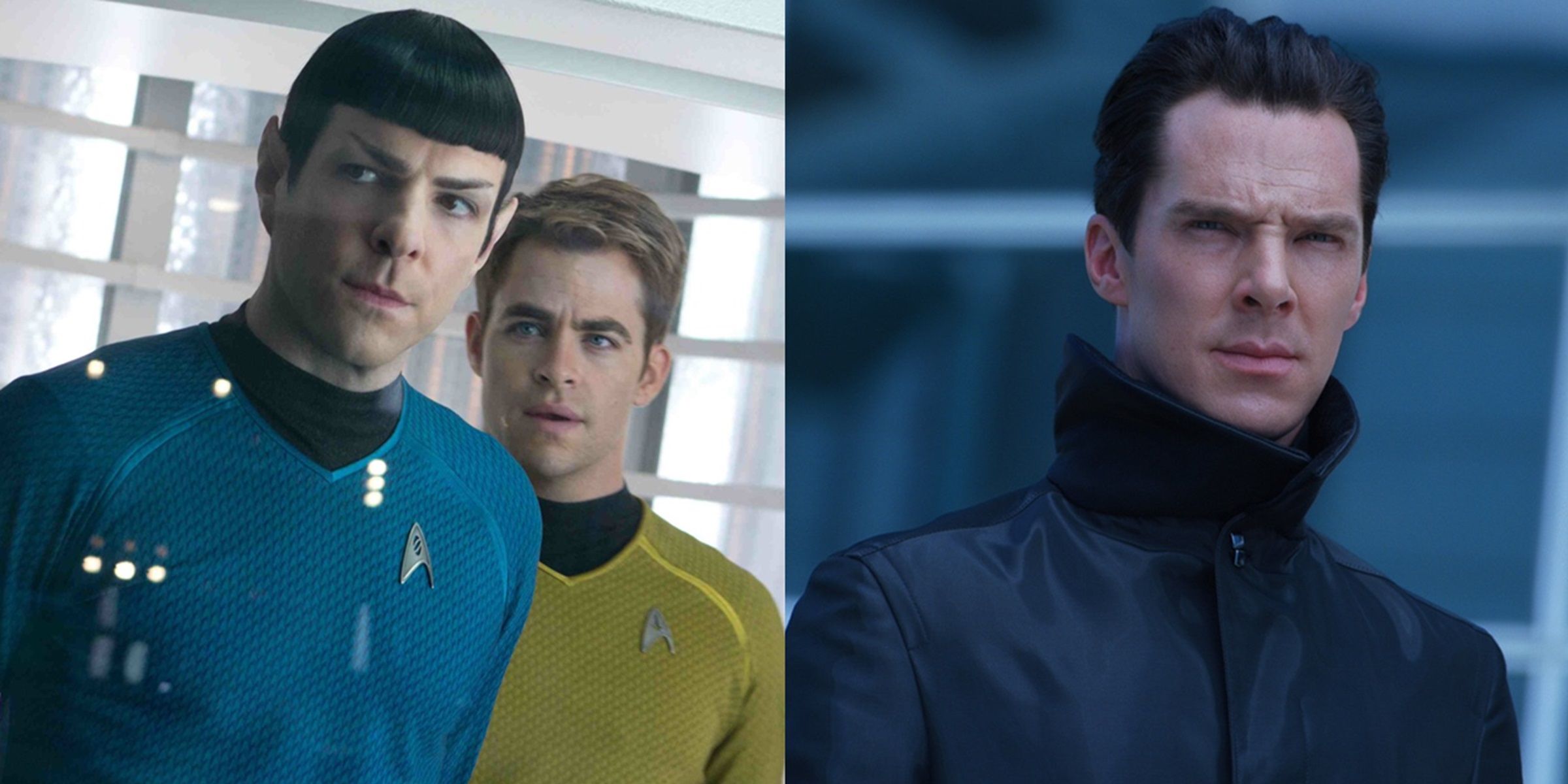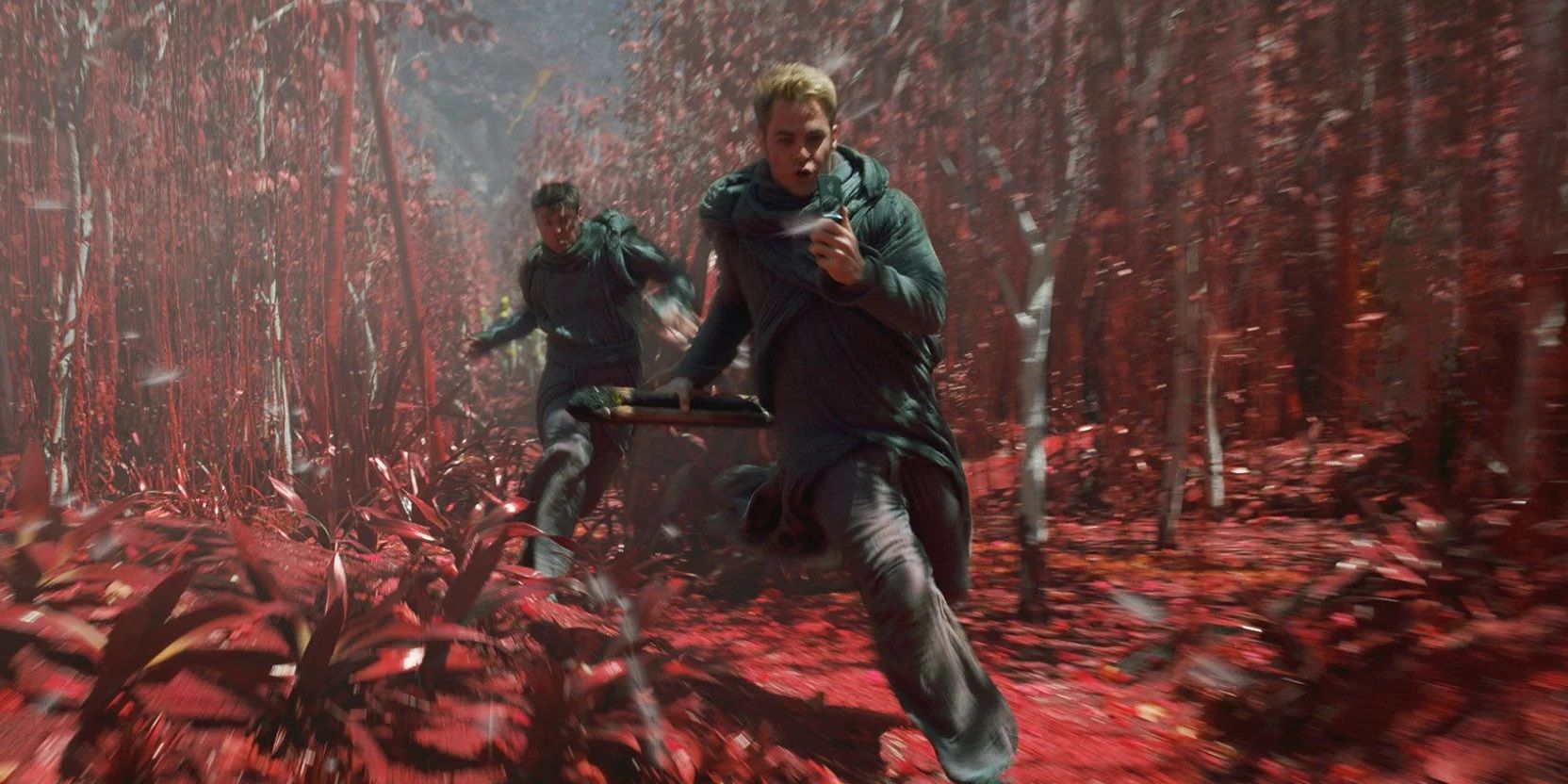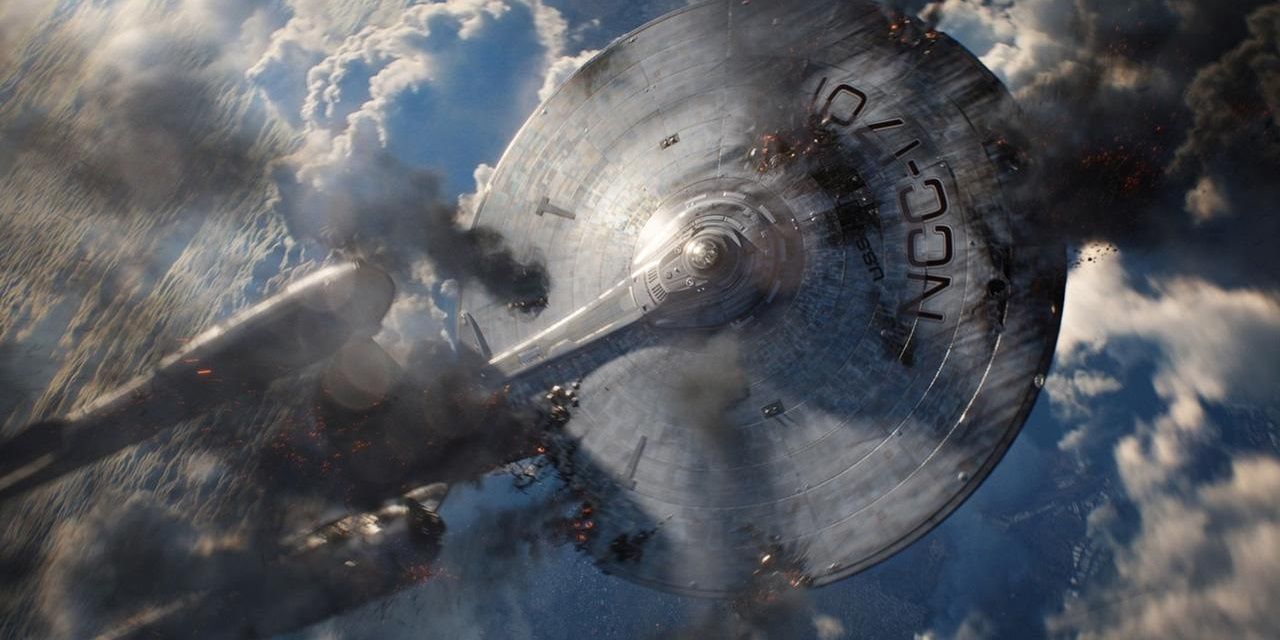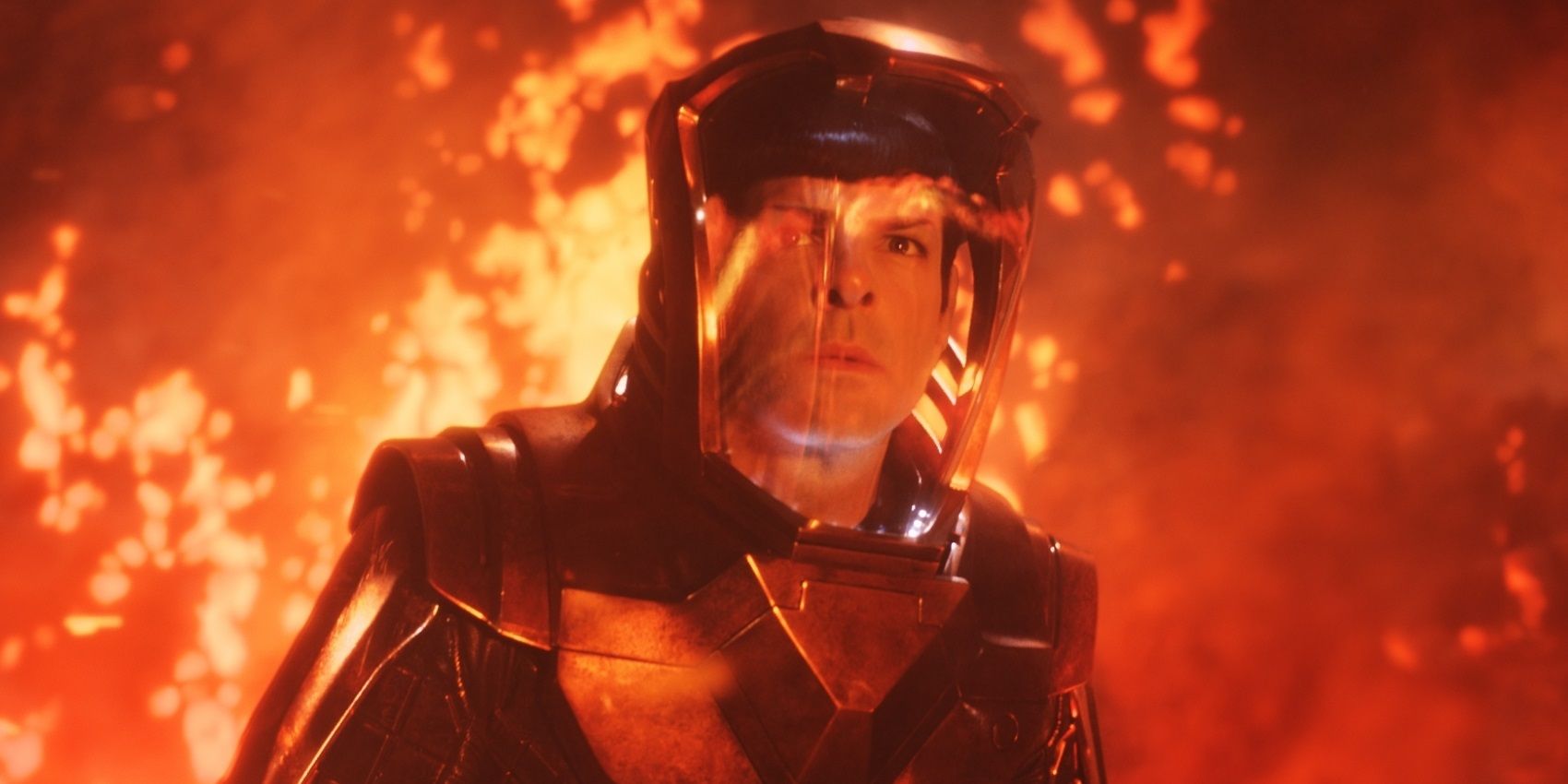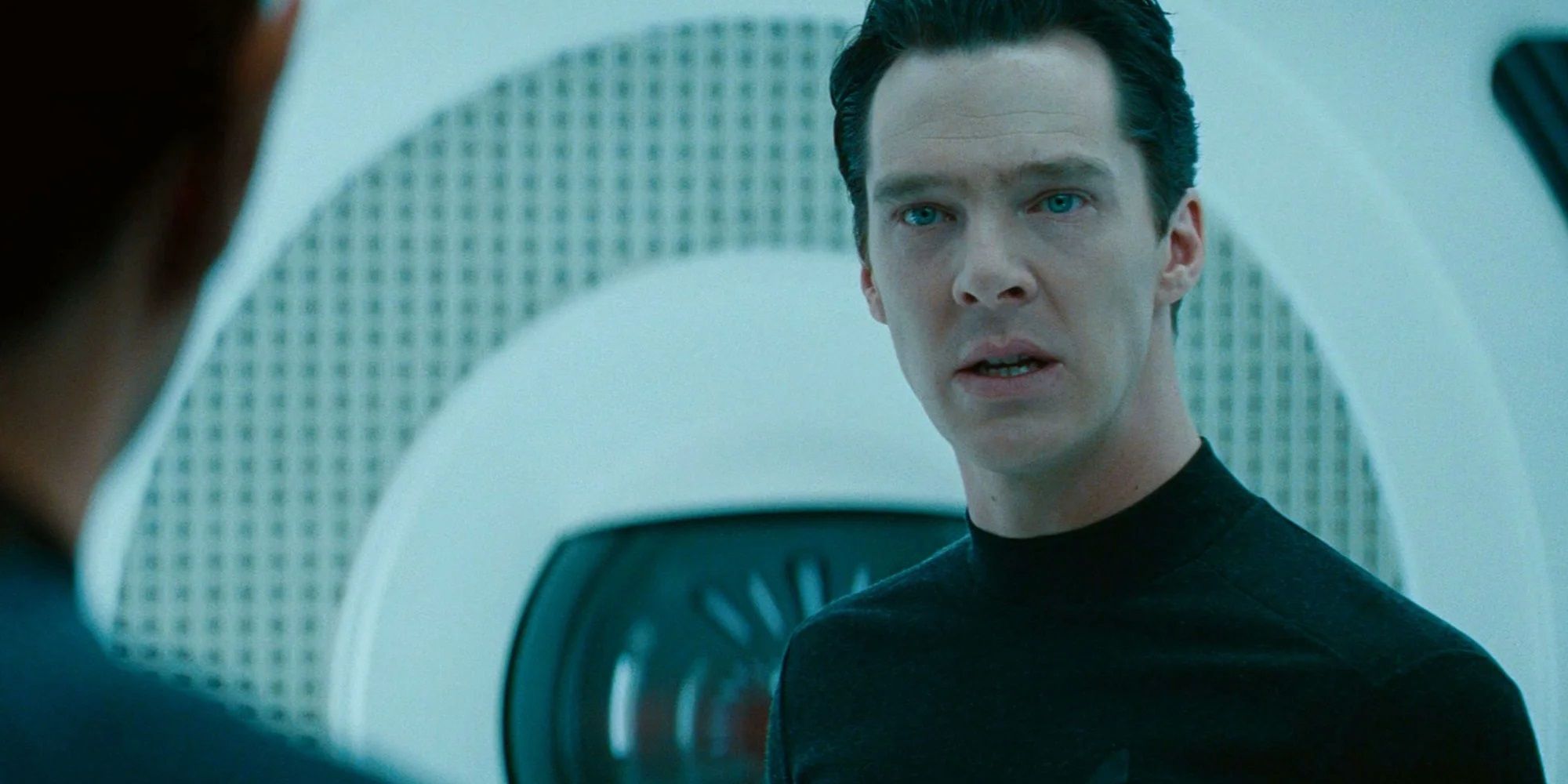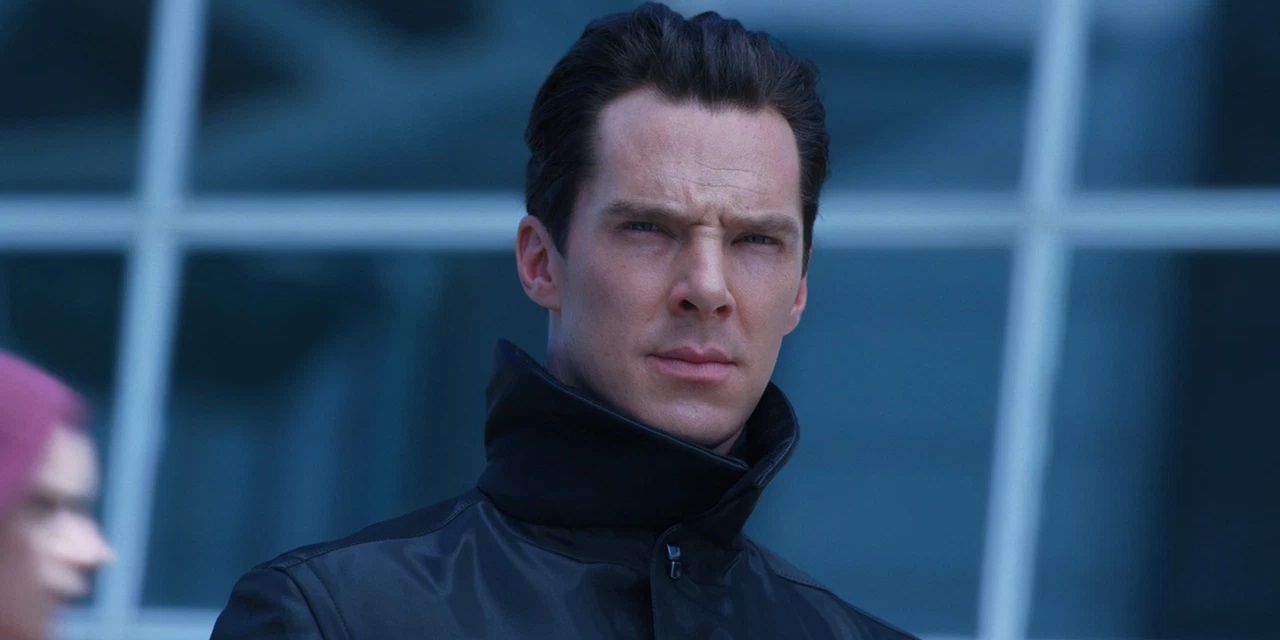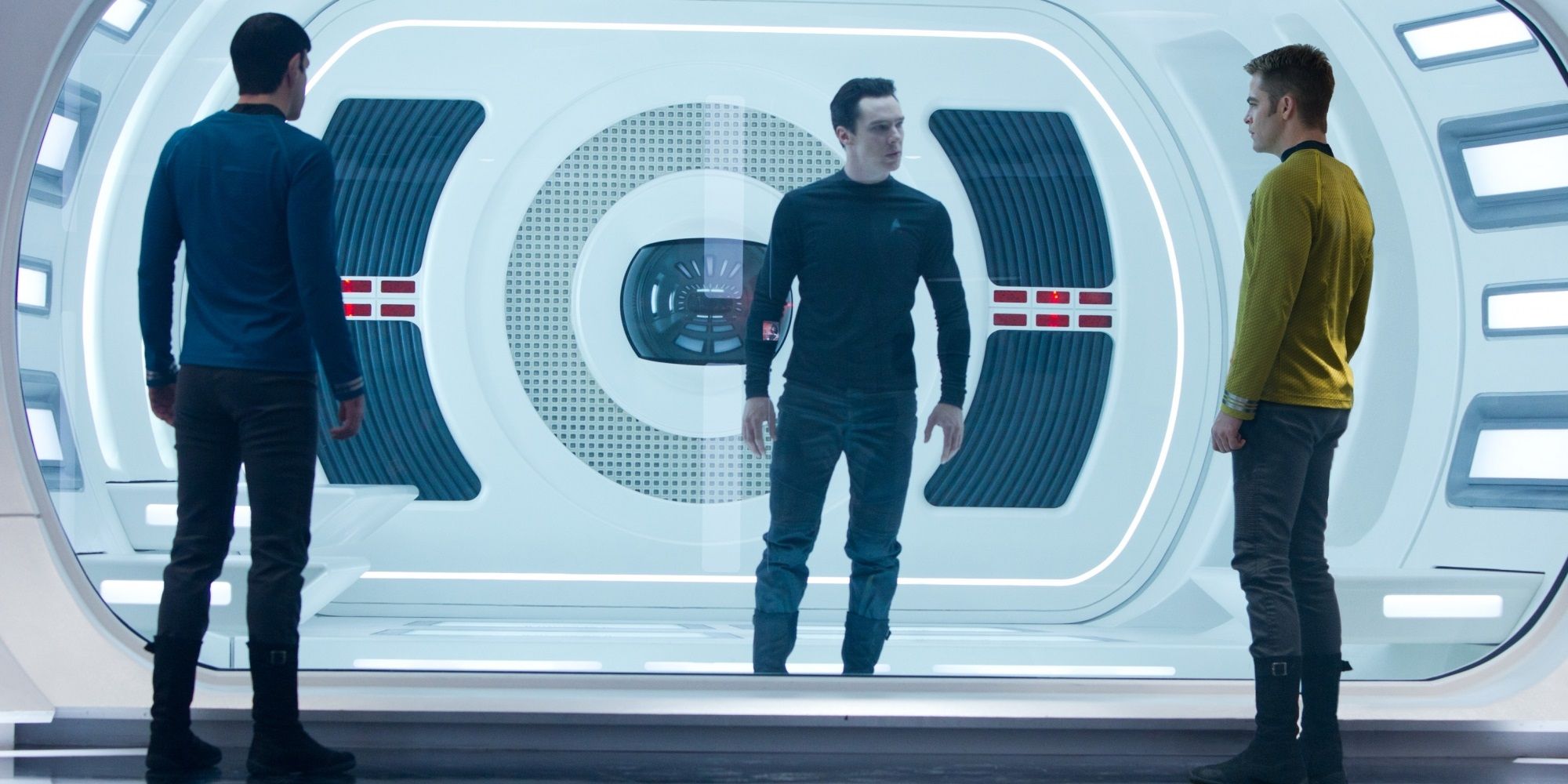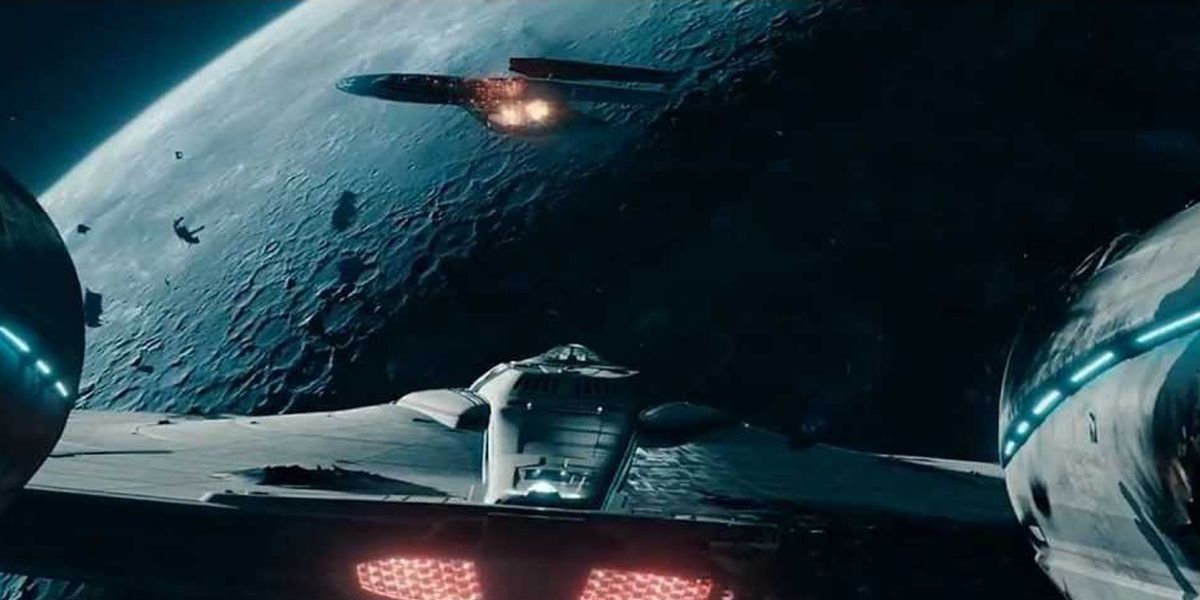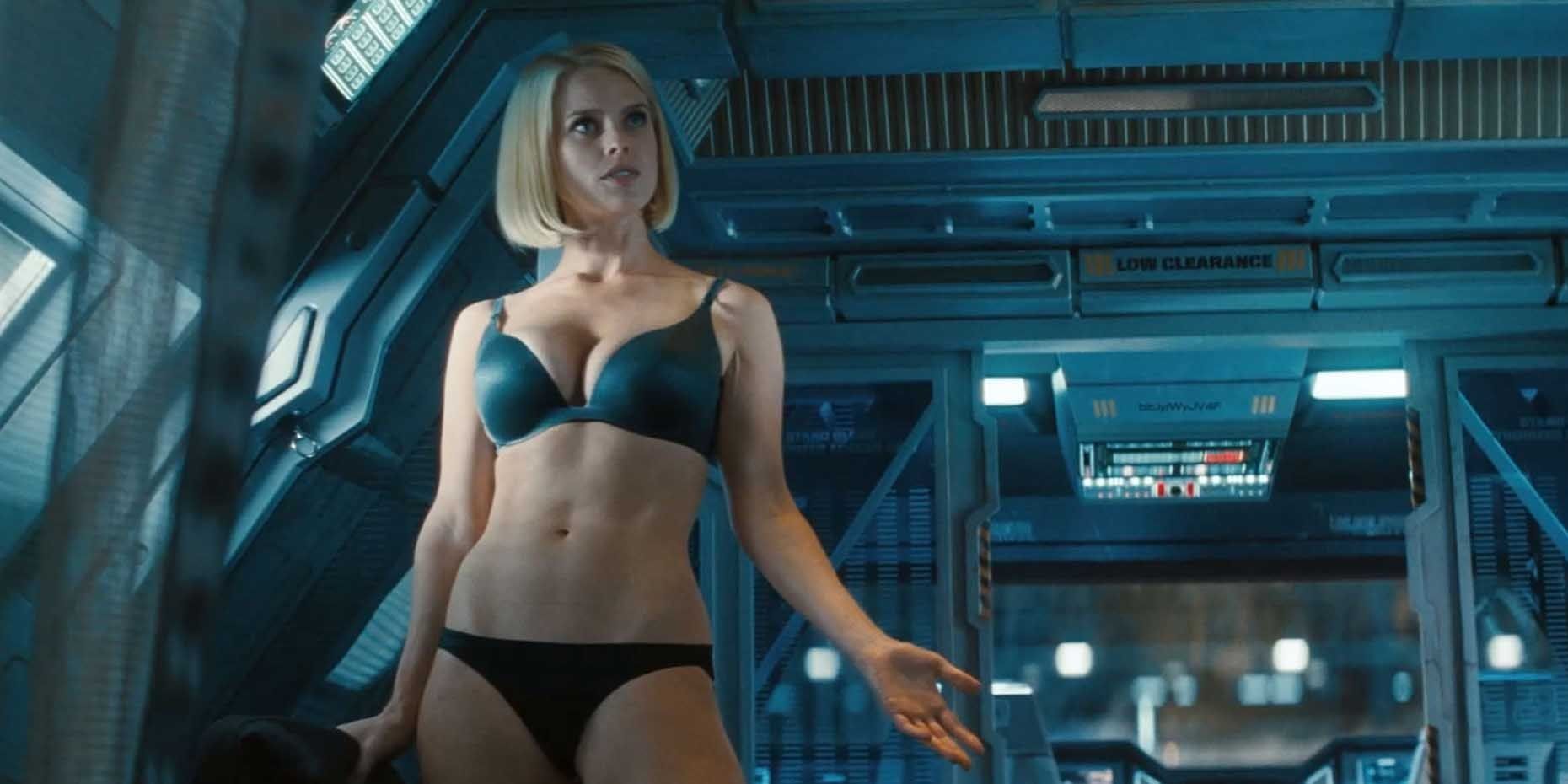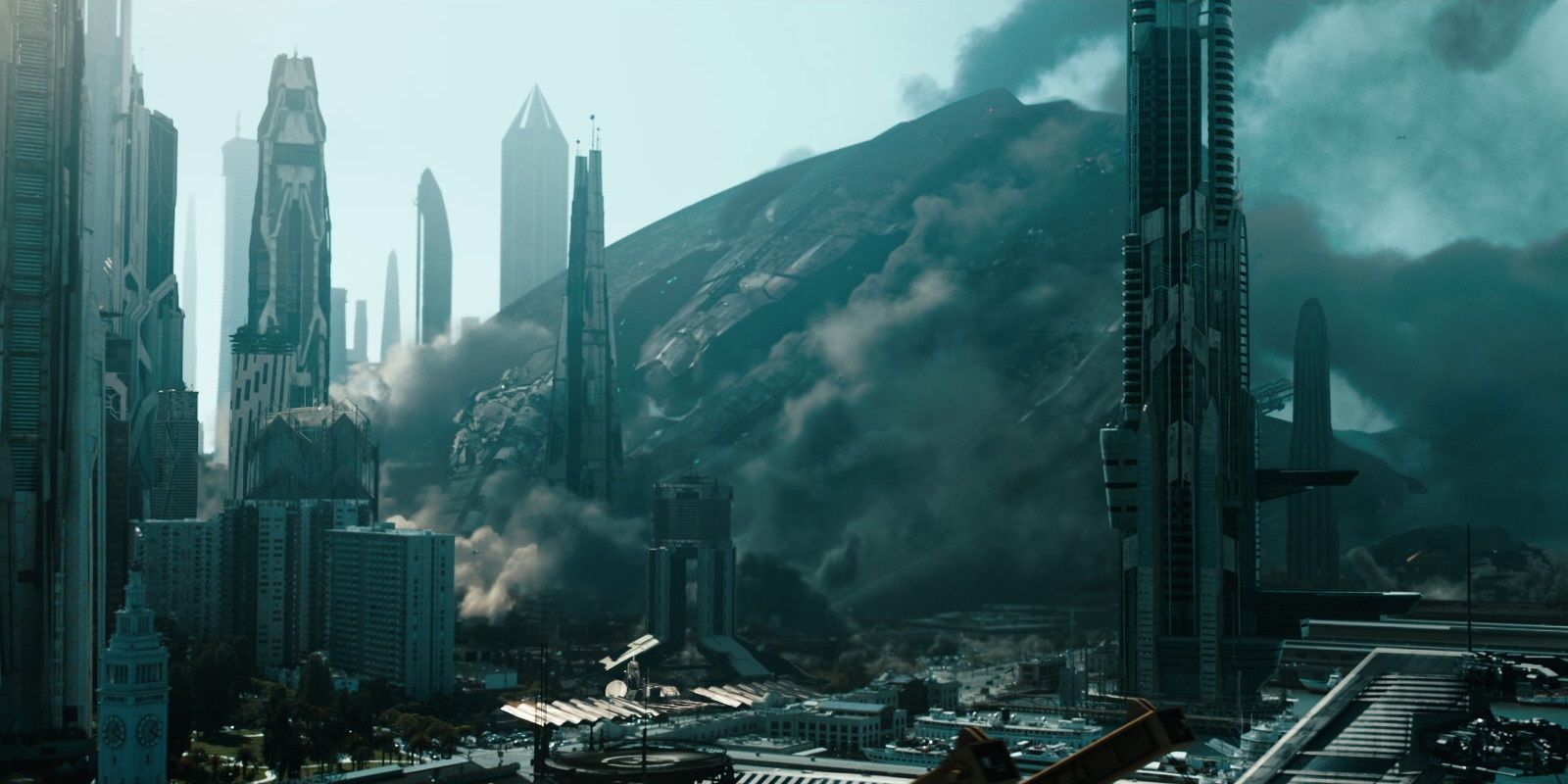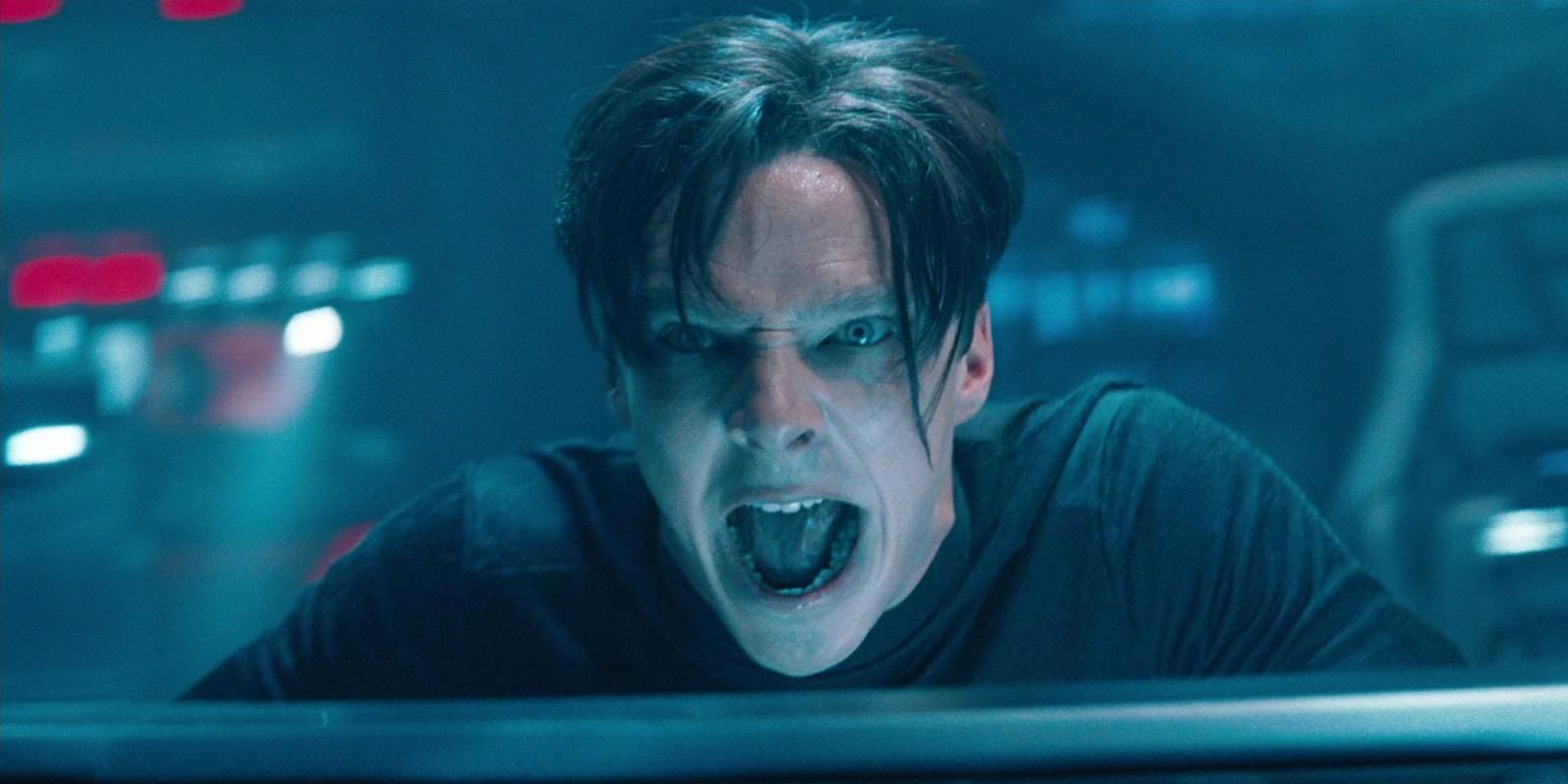After revitalizing the Star Trek franchise with his 2009 reboot, J.J. Abrams returned to helm a sequel that, as usual (like with The Dark Knight, The Empire Strikes Back, and even The Wrath of Khan), was much darker than its predecessor. Star Trek Into Darkness sees the crew of the Enterprise contending with a nefarious terrorist played by Benedict Cumberbatch.
Critics didn’t eviscerate the film like a Suicide Squad or a Rise of Skywalker, but Star Trek Into Darkness wasn’t as highly acclaimed as the first one. While there are some major missteps in the script, there’s still a lot to love about the 2013 sequel.
Right: Riveting Opening Set Piece
Like all the best sequels, after laying the groundwork in the original movie, Star Trek Into Darkness dives headfirst into the action. The film starts with a riveting, edge-of-your-seat set piece that plays like an Indiana Jones opening in space.
In the red forests of Nibiru, Kirk and Bones flee from the base of an active volcano with a sacred scroll as legions of Nibirans chase them.
Wrong: Dark Tone
Abrams and his team set out to tonally differentiate Star Trek Into Darkness from its predecessor. The problem with that is that the way they chose to do so is the same way almost every other sequel does so — by going darker — and it didn’t work for Trek.
Like Man of Steel’s uncharacteristically gloomy take on the Superman myth and Fant4stic’s weirdly body horror-inspired take on Marvel’s first family, a dark tone doesn’t suit the Star Trek universe.
Right: Michael Giacchino’s Score
Michael Giacchino wrote a great score for 2009’s Star Trek, giving the franchise a hummable new theme, but he wrote an even greater score for its 2013 sequel.
The action sequences in Star Trek Into Darkness wouldn’t be anywhere near as compelling without Giacchino’s music playing over them.
Wrong: The Khan Twist
Midway through Star Trek Into Darkness, the bad guy John Harrison is revealed to be Khan Noonien Singh, the iconic villain from the first Star Trek movie sequel. The problem with this twist is that it makes no sense to passive viewers who don’t know who Khan is.
And Trekkies who do know who Khan is could see the twist coming from a mile away, despite J.J. Abrams handcuffing the script to the guy who brought it Benedict Cumberbatch, because it was painfully obvious.
Right: Casting Benedict Cumberbatch
The one saving grace of the John Harrison character is that he’s played by Benedict Cumberbatch. He might be written as a one-note baddie who could’ve been ripped straight from any other factory-line Hollywood sequel, but Cumberbatch brings enough nuance to keep the character interesting.
Before Cumberbatch was cast to play Doctor Strange in the Marvel Cinematic Universe, Harrison was his highest-profile blockbuster role, and he didn’t disappoint.
Wrong: Getting Caught Was Part Of The Plan
Ever since the Joker got arrested on purpose in The Dark Knight, getting caught has been a part of just about every blockbuster villain’s masterplan.
Silva in Skyfall, Loki in The Avengers, and even Bane in The Dark Knight Rises all got captured as part of their plan. And then, after all those examples had numbed the minds of moviegoers, John Harrison got caught on purpose in Star Trek Into Darkness.
Right: Dazzling Visual Effects
One of the most common criticisms faced by J.J. Abrams’ Star Trek movies is that they rely too much on visual effects. But they’re big-budget blockbusters about warring factions in the heavily populated outer space of the distant future. What did critics expect to see?
The effects in Abrams’ Trek movies, particularly Into Darkness, are eye-popping. Every action scene is a dazzling spectacle — lens flares notwithstanding.
Wrong: Alice Eve’s Gratuitous Underwear Shot
There’s a gratuitous shot in Star Trek Into Darkness in which Alice Eve’s character Carol Marcus strips down to her underwear for absolutely no reason other than the film wanting to objectify her.
Writer-producer Damon Lindelof apologized for the scene, while J.J. Abrams tried to defend it on Conan by screening a deleted scene of Benedict Cumberbatch in the shower, which didn’t work because: a) it was deleted, so it doesn’t count, and b) “Sure, my movie objectifies women, but it almost objectified men, too,” isn’t a valid excuse.
Right: The Earth-Set Finale
In Star Trek Into Darkness’ big finale, Khan crashes the Vengeance into San Francisco in the hopes of destroying Starfleet’s headquarters as Spock races through the sprawling futuristic metropolis to stop him.
For all the spacefaring antics of this franchise, scaling back the action in the third act and focusing on the characters had the surprising effect of making the story feel even bigger.
Wrong: Whitewashing Khan
Khan was pretty specifically conceived as a non-white character. He was introduced as a Sikh was said to have ruled over a lot of eastern Eurasia. So, naturally, the casting of white actor Benedict Cumberbatch in the role drew some criticisms of whitewashing.
The producers were reportedly concerned about casting an actor of Middle Eastern descent as a terrorist, but representation of people of color is virtually non-existent in Hollywood blockbusters. The last thing big-budget cinema needed was another white guy.

